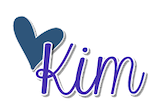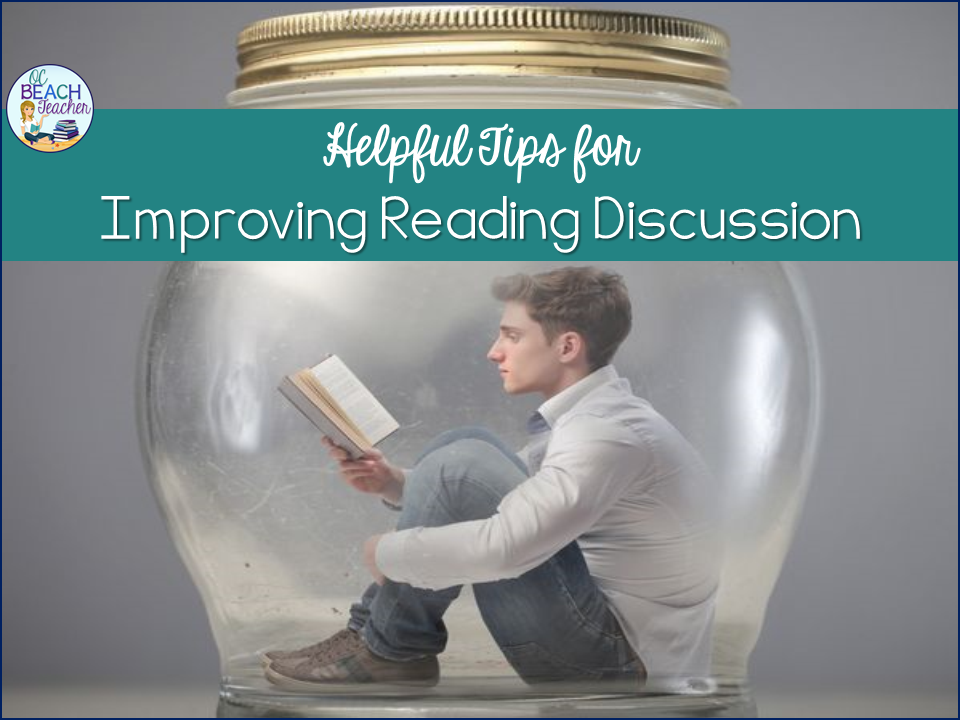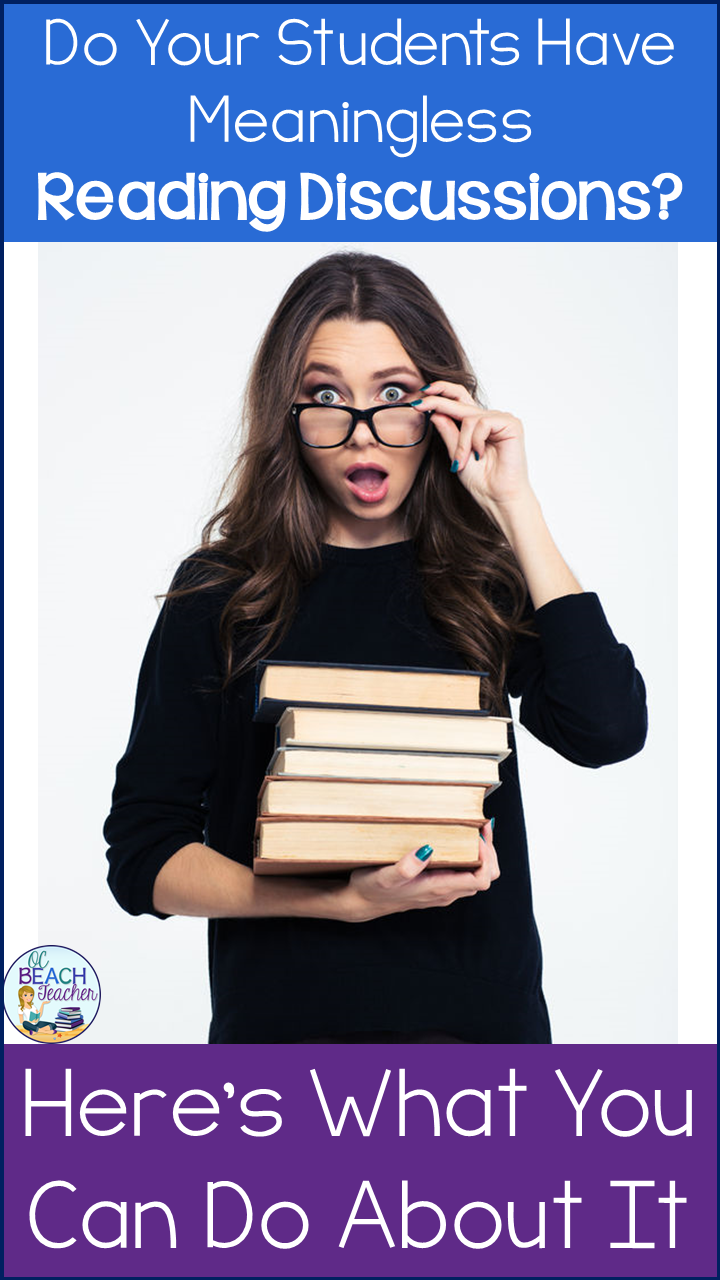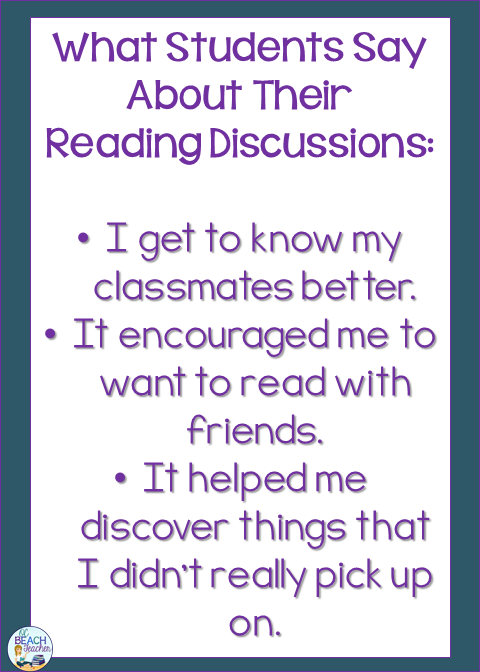As many English teachers know, it can be difficult to stop being the leader of classroom discussion. We teachers worry that students will not have meaningful discussion about their reading. But how will they ever get better if we don’t let them try to take ownership for their learning?
Undoubtedly, they don’t have the experience and knowledge that we have, so it’s normal that their discussions may not be as deep as when we lead. A conscientious teacher will want students to read closely, think critically, note author’s craft, and make relevant connections. And because I want my students to do all of the above, I’ve developed a structure called roundtable discussion that provides just enough structure to get my students started with these skills. This discussion strategy (inspired by literature circles and Socratic seminar) incorporates strategies to help students have sophisticated conversations.
However, despite the many activities I’ve included to prepare for these discussions, I occasionally will run into difficulties. After my most recent roundtable unit, I developed solutions to some of the following problems.
Individual Student Accountability
Despite my best efforts, some students don’t do their share of their work in their groups. Unfortunately, that’s often the reality of any group or team activity. To counter this and make the learning more equitable, my students complete both self-evaluations and peer evaluations that I average together (one part of the assessment). Often, I add teacher evaluations, too.
The feedback handouts are simple to complete and each response asks students to circle their agreement for the
following:
· He/she read the assigned pages on time.
· He/she came to discussions prepared.
· He/she listened to others.
· He/she participated in discussion.
· He/she stayed on topic during discussion.
They get to give feedback on their own performance as well as their peers (which can be anonymous). Peers can also add comments and often write praise to the group members who did outstanding work. For instance, they may tell a group member that they helped them understand the book more or kept the group focused or were good leaders. Sometimes they’ll provide constructive criticism, too, like saying a classmate’s absence or lack of preparation made it harder to have useful discussions.
Absent Students
This is a problem because there are always a few students with chronic attendance issues or even student athletes who miss class regularly. Regrettably, without all members in attendance, the discussions aren’t as engaging and thoughtful.
When I create my groups at the beginning of the unit, I take student attendance into consideration. I separate students who are chronically absent, and I also assign four – six students to a group. If one or two students are absent on a discussion day, this prevents the groups from being too small.
Also, I have “make up” assignments in which students are required to respond to two questions each time they miss a discussion. They submit their written responses in lieu of the response sheet that usually accompanies the discussion. And sometimes, I do have to just let a student work independently. Recently, I had a student miss two and a half weeks because of her theater performances.
Poor Questioning Skills
Occasionally, I have a group that has difficulty writing effective questions for discussion. To help prevent this, I model the difference between recall questions and questions that require more thinking; then I require students to ask at least one of each. I give them words for starting these questions: why, how, explain, evaluate, etc.
We also practice writing questions for whole-class reading of stories, poems, and other texts. If they’re still struggling to ask questions that will elicit high-level thinking, I may print questions that I’ve generated, and then I give them to the group. (This is also a good strategy for groups where some members aren’t reading.)
Sometimes, when they have difficulty writing good questions, conversing spontaneously, or going beyond basic recall, I provide specific activities for them to complete during discussion. I include these tasks on the “Discussion Guideline” that I project from my document camera. These may include some of the following:
– Create a timeline of events (helpful when students are reading a book that has a nonlinear structure). This recently helped my group reading Slaughterhouse Five.
– Draw a map (track the path of a character’s journey in a book). For a group that recently read Into the Wild, this activity was a tremendous help to them.
– Define new vocabulary. I may ask students to find words that they don’t know from the sentences in their books. This is especially helpful for books that incorporate words from an earlier era or another language. When students read A Thousand Splendid Suns, they find it helpful to use the internet to look up the meaning of the words from Farsi.
– Research the author. Students search reliable sources for information about the author. Then they use a biographical lens to make connections to their reading.
– Write a goodbye letter. For a conclusion activity, I ask them to write a “Goodbye Letter” to their books, sharing their thoughts and feelings about the book. These letters can even be displayed in my classroom.
The strategies above have immensely improved our reading discussions. Of course, every time I anticipate a potential difficulty and create a solution, a new issue arises! As all teachers know, we have to constantly be thinking quickly and be prepared to adapt our instruction to meet the needs of the individual learners in our classroom.
What are some problems you have encountered during classroom discussions? Do you have any solutions to share below? I’m always interested in learning from other educators!





